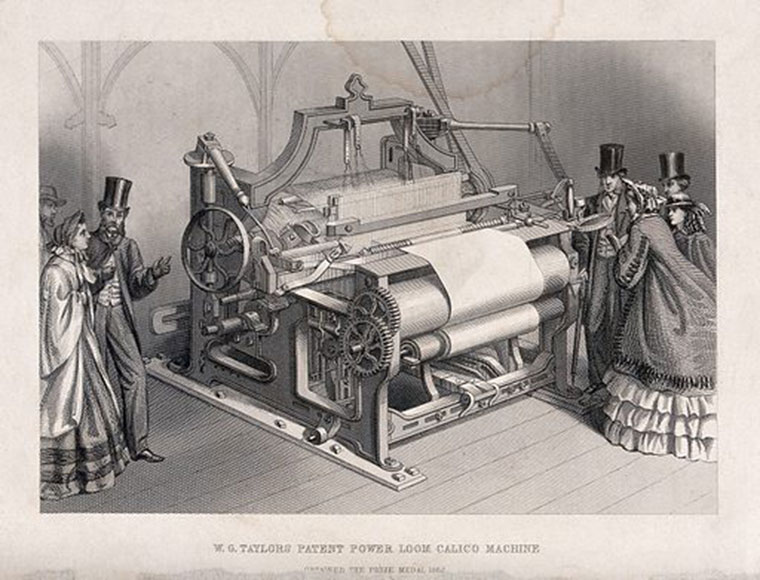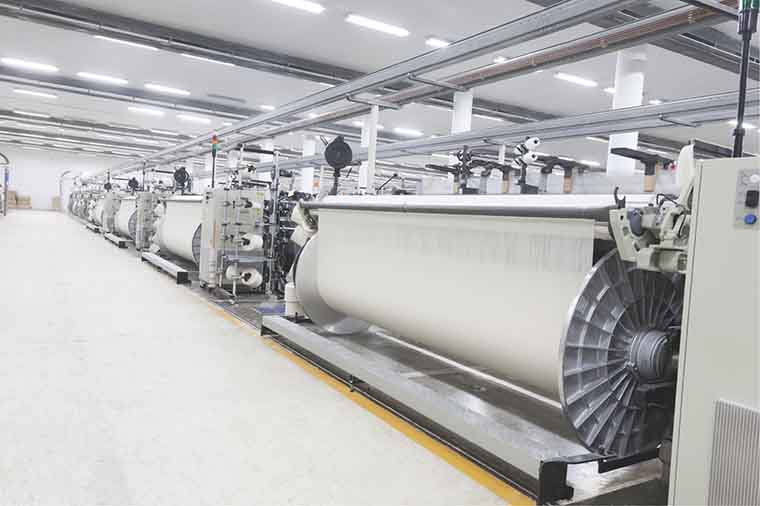A weaving machine is a device that used to weave cloth and other fabric products, which has experienced a long history. But the process of it is the same, like creating a shed, inserting the filling and beating up the pick. With years of study and research, developments of weaving machine pay more attention to automation and technical innovation, so efficiency of modern weaving machine improves a lot. Here are some incredible things you never know about weaving machine.
History of Weaving
People in Paleolithic era, have already known about weaving. In ancient Egypt, the first popular fiber was flax, which can be dated from about 5000 BC, and was replaced by wool around 2000 BC. And one or two persons are needed to work on early looms. By 700 AD, horizontal and vertical weaving looms were found in Asia, Africa and Europe. At the same time, pit-treadle machine with pedals for operating heddles also appeared. In Medieval Europe, people wove at home and sold in the market. The first industrial revolution changes weaving from hand to machine. In 1733, John Kay invented flying shuttle, which improved weaving speed greatly.
The First Weaving Machine
Gennes developed the first idea of making an automayic loom in 1678, as well as by Vaucanson in 1745. However, these are just designs that were never coming true and were forgotten gradually. Later in 1785, Edmund Cartwright designed and invented the first power loom machine, which is a predecessor to the modern weaving machine.

Types of Weaving Looms
Backstrap Loom
The Backstrap Loom is a very simple loom, which is produced in ancient time and is still used in many countries nowadays. Beautiful and complex patterns can be weaved by this kind of loom.
Tapestry Looms
Frame loom is included in tapestry looms. As the simplest loom, it can not create a shed. In addition, the tapestry you make is constrained to some extent to the size of the frame.
Inkle Looms
You can use inkle looms to weave some narrow strips of fabric, like straps and belts and so on. They are portable and it’s really easy for beginners to learn.
Rigid Heddle Looms
This is also a kind of loom that beginners can learn it easily. And it’s portable, you can use it both with or without a stand.
Table Looms
Compare to other looms, table looms are more complex. But they are smaller and more portable than table looms. Weavers can use it on the top of a table, as well as on a stand. In common, there are four or eight shafts on a table loom.
Floor Looms
These are largest looms, which are used for weaving larger projects. Normally, they have four or eight shafts. They can also be controlled by a dobby in a electronic way, which can create sheds by lifting and lowering the harnesses.

SUNTECH is professional enterprise, with experience of more than 50 years, we are committed to provide high-quality products and professional service to global customers. We do everything to satisfy all the customers. We are always ready to offer you excellent service. Welcome to contact us get more information.




